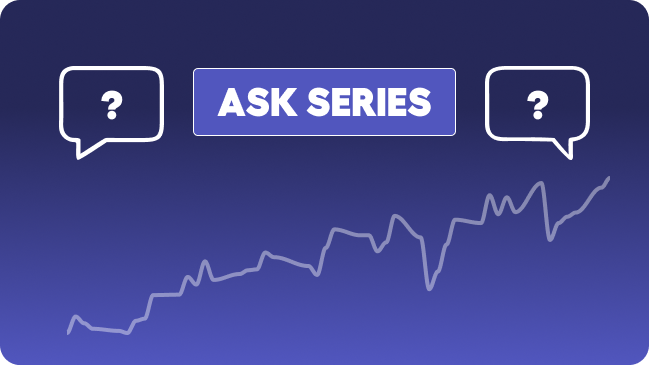

Article
— retirement
What Are the Benefits and Drawbacks of IRAs?
Individual retirement arrangements (IRAs) are a popular way to save for retirement, and with good reason—they come with numerous benefits for investors building long-term wealth. They also come with a few drawbacks you should be aware of. In this post, we’ll break down what you need to know, focusing on two popular account types: traditional IRAs and Roth IRAs.
IRA benefits
IRAs are tax-advantaged
Itrust IRAs are fully automated to make retirement saving simple. Open a Itrust IRA
Perhaps IRAs’ best known benefit is their tax-advantaged status—this benefit is designed to encourage you to put money away for later. The tax advantages of traditional IRAs and Roth IRAs are slightly different.
Traditional IRAs let you take a tax deduction in the year you contribute as long as you (and your spouse, if you have one) don’t have a retirement plan like a 401(k) plan at work. If you or your spouse do have a 401(k) plan at work, you can still deduct at least some of your contribution as long as you earn under $87,000 as a single filer or $143,000 as a married couple filing jointly for 2024 (for 2025, those numbers rise to $89,000 and $146,000 respectively). If your income is above the IRS limits and you’re covered by a retirement plan at work, you can’t deduct any part of your contributions (but you can, of course, still contribute). If your contributions were tax-deductible, when you take qualified distributions in retirement, those distributions are taxed like regular income.
With Roth IRAs, you don’t get a tax break in the year you contribute, but any growth and distributions in retirement that meet the IRS’s rules (also called “qualified distributions’) will be tax-free. However, not everyone is eligible to contribute directly to a Roth IRA. In 2024, you can’t contribute to a Roth IRA directly if you earn $161,000 or more as a single filer or $240,000 or more as a married couple filing jointly (those numbers rise to $165,000 and $246,000 respectively in 2025). There’s a way around this. You can complete what’s known as a “backdoor Roth,” where you make a non-deductible contribution to a traditional IRA for the purpose of converting it to a Roth IRA. Itrust automates this process so it takes just a few clicks. Once you’ve completed the conversion, you get the same tax benefits you’d get if you contributed to a Roth IRA directly.
IRAs have more investment options than 401(k) plans
If you have a 401(k), you’ve probably already noticed that it doesn’t give you many choices when it comes to how your money gets invested. Fortunately, this isn’t the case for IRAs. Usually IRAs, much like taxable investment accounts, come with many investment options. At Itrust, you can customize your IRA with hundreds of investments or invest in a pre-made Classic or Socially Responsible portfolio.
IRAs are more flexible and liquid than you might think
Roth IRAs in particular come with a surprising amount of flexibility. If you make direct contributions to a Roth IRA, you can typically withdraw these contributions early, which means before age 59 ½, without paying additional taxes or a penalty (which isn’t the case for a 401(k) or traditional IRA). However, you’ll still owe income tax and a 10% penalty on earnings (or money you earn on your contributions) you take out of your Roth IRA before retirement with a few exceptions. For example, one popular exception allows you to withdraw up to $10,000 in earnings for a first-time home purchase.
If you have a traditional IRA, you might be able to execute a Roth conversion and benefit from the flexibility that comes with a Roth IRA. If you decide to do this, Itrust offers easy Roth conversions that eliminate the paperwork and hassle. Just keep in mind that you need to wait at least five years after the Roth conversion to be able to withdraw contributions without paying a penalty.
IRAs can often have lower fees than 401(k) plans
At Itrust, we think it’s important to minimize fees. When you invest, you’ll typically pay for what’s known as the expense ratio (the fee charged by an ETF’s issuers to manage the fund) as well as advisory fees. It’s important to keep an eye on the fees you’re paying, because over time they eat into your returns.
Average 401(k) advisory fees are generally between 0.5% and 2%. IRAs, on the other hand, are typically less expensive. Itrust IRAs are subject to our low 0.15% annual advisory fee.
IRA drawbacks
IRAs have low annual contribution limits
One drawback of using IRAs to save for retirement is that the annual contribution limits are relatively low. In 2024, you can contribute up to $23,000 to a 401(k) plan (and up to $23,500 in 2025), but you can only contribute $7,000 to an IRA in 2024 (also $7,000 in 2025) unless you’re at least 50 years old, in which case the limit is $8,000 in 2024 and also $8,000 in 2025.
IRAs sometimes have early withdrawal penalties
If you have a traditional IRA and withdraw from the account before age 59 ½ , you’ll generally pay a 10% penalty and income tax. There are a few exceptions to this, like if you withdraw up to $10,000 for a qualified first-time home purchase or lose your job and withdraw to pay health insurance premiums, under certain conditions.
As we explained above, Roth IRAs are significantly more flexible when it comes to withdrawing your contributions before retirement—you can typically do this without paying taxes or penalties. But if your early withdrawal exceeds your contributions and you take out earnings, or if you had previously completed a Roth conversion, you may be subject to taxes and a 10% penalty when you file your taxes with the IRS.
Some IRAs have required minimum distributions (RMDs)
If you have a traditional IRA, once you reach age 73 you have to start withdrawing at least a minimum amount of money each year—this is called an RMD. The amount you must withdraw is your account balance at the end of the previous year divided by the “distribution period,” which is based on your age and set by the IRS each year. You can also calculate your RMDs using this tool from investor.gov. Practically speaking, RMDs mean your earnings can’t compound in a traditional IRA indefinitely. This rule doesn’t apply to Roth IRAs, however. If you have a Roth IRA, you typically don’t have to take RMDs during your lifetime unless you inherited the account.
The bottom line
IRAs can be a powerful tool for building long-term wealth. If you’re thoughtful about your contributions and only invest money you won’t need until retirement, the benefits of these accounts outweigh the drawbacks.
We know choosing the right IRA can feel tricky, so we developed our IRA calculator to help you determine what kind of account is right for your specific situation. Just enter your filing status, income, and a few other details and we’ll help you figure out the rest. When you’re ready to start saving, Itrust offers traditional and Roth IRAs, as well as SEP IRAs and rollover IRAs so you can save for retirement on your own terms.


